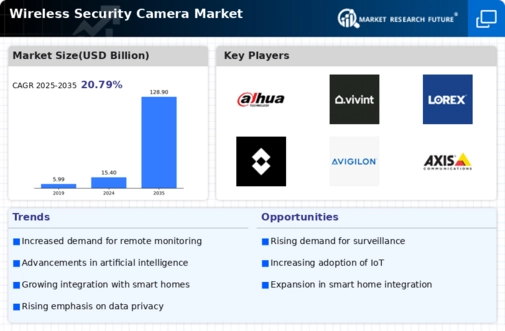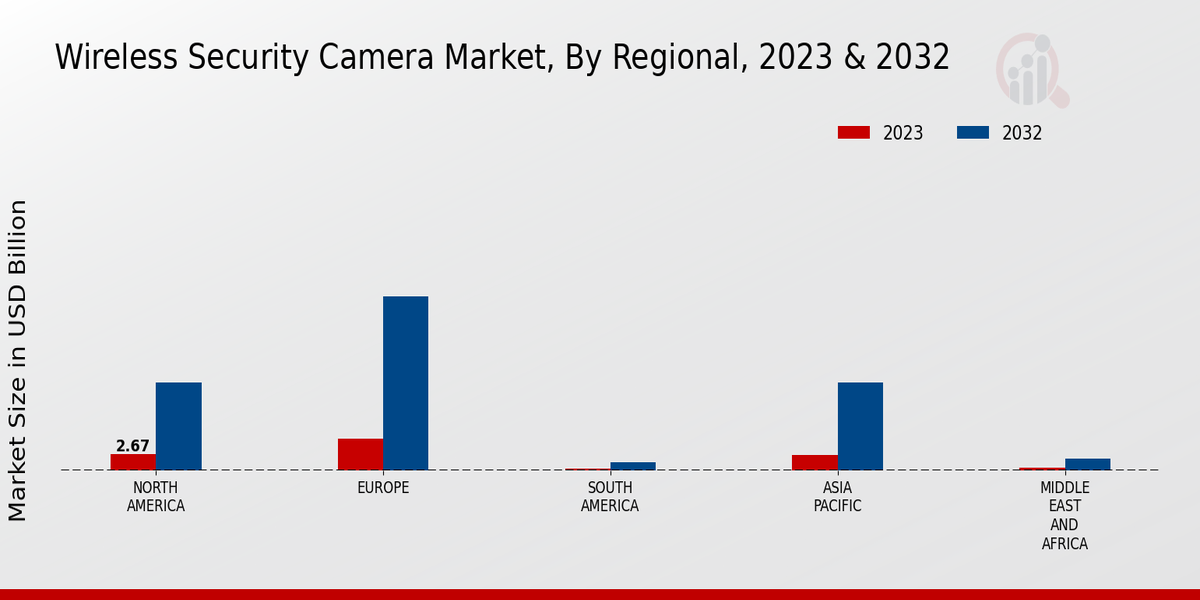Wireless Security Camera Market Summary
The Global Wireless Security Camera Market is projected to experience substantial growth from 16.14 USD Billion in 2024 to 128.95 USD Billion by 2035.
Key Market Trends & Highlights
Wireless Security Camera Key Trends and Highlights
- The market is expected to grow at a compound annual growth rate (CAGR) of 21.3% from 2025 to 2035.
- By 2035, the market valuation is anticipated to reach 128.9 USD Billion, indicating a robust expansion.
- Starting from a base year valuation of 15.4 USD Billion in 2024, the market shows promising growth potential.
- Growing adoption of wireless security cameras due to increasing concerns over safety and security is a major market driver.
Market Size & Forecast
| 2024 Market Size | 16.14 (USD Billion) |
| 2035 Market Size | 128.95 (USD Billion) |
| CAGR (2025-2035) | 20.79% |
Major Players
Honeywell Security, Dahua Technology, Swann Communications, Vivint Smart Home, Lorex Technology, Bosch Security Systems, FLIR Systems, Avigilon, Axis Communications, Arlo Technologies, Ring, Samsung Techwin, Wyze Labs, Netgear, Hikvision























Leave a Comment